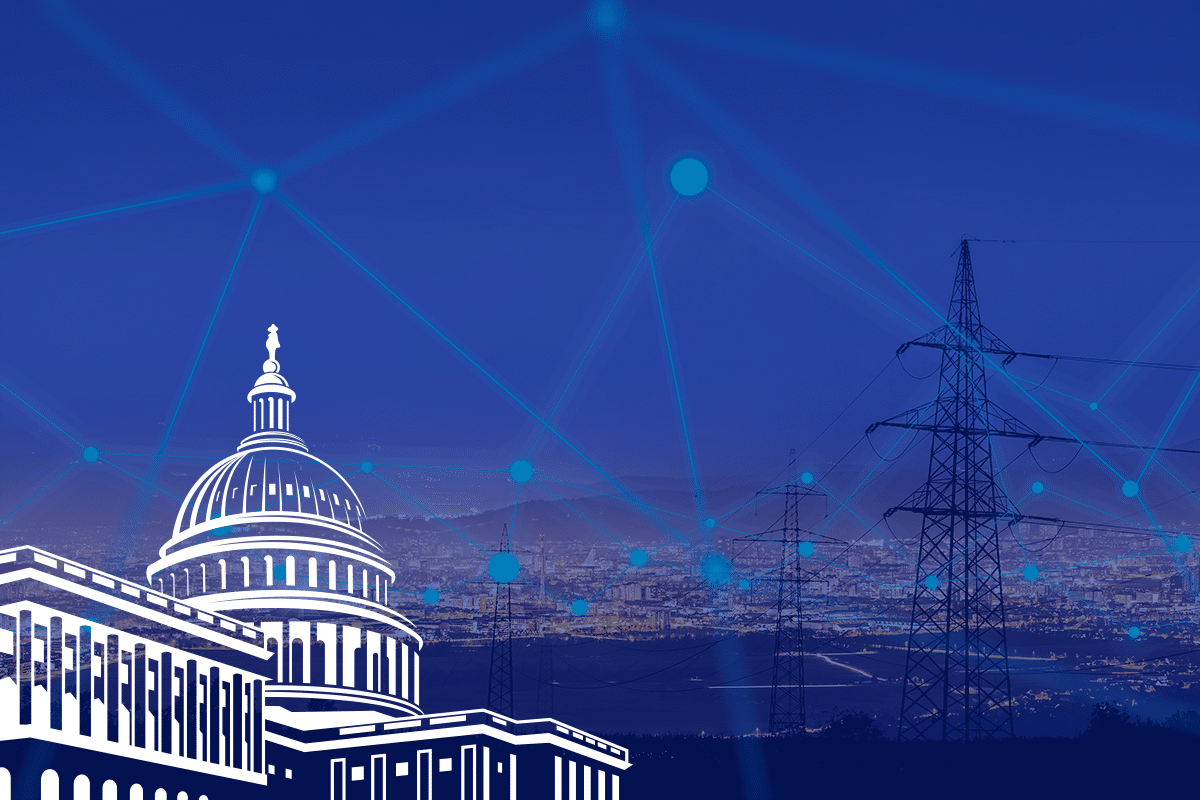The Infrastructure Investment and Jobs Act: What It Means for Public Power and Electric Cooperatives

 On Friday, November 5, the U.S. House of Representatives passed a bipartisan infrastructure package, and on November 15, 2021 the President signed it into law. The politics surrounding the passage of this legislation aside, the fact remains that a significant portion of this investment is aimed at upgrading our national electric grid, expanding broadband access in rural and low-income communities, and further developing infrastructure for clean energy and
On Friday, November 5, the U.S. House of Representatives passed a bipartisan infrastructure package, and on November 15, 2021 the President signed it into law. The politics surrounding the passage of this legislation aside, the fact remains that a significant portion of this investment is aimed at upgrading our national electric grid, expanding broadband access in rural and low-income communities, and further developing infrastructure for clean energy and
EVs. In short, our lawmakers expanded the definition of “essential infrastructure” to include the critical assets that empower utilities to improve reliability in support of the communities they serve.
And as such, this new legislation poses meaningful opportunities for public power and electric cooperative utilities in the form of additional funds and resources to upgrade their infrastructures and digitize their distribution grids to deal with unprecedented pressures.
The Infrastructure Investment and Jobs Act includes over $175 billion in funding to implement smart grid solutions that improve grid resiliency, including $52.5 billion to expand broadband access to communities that do not already benefit from equitable access to the internet.
Specifically for utilities, the legislation invests $5 billion in grants for the electricity generation and distribution sector to improve electrical grid resiliency, $5 billion for competitively awarded financial assistance to utility providers to demonstrate new approaches to grid resilience, and $3 billion for grants that match investment in smart grid technologies. These funds are tailored to help utility providers and stakeholders leverage federal investment to make the transition into smart, resilient grids.
The package also supports America’s transition to and adoption of electric vehicles by investing $7.5 billion in EV infrastructure, including a national network of charging stations. The package acknowledges the direct impact EVs and the electrification of our transportation industry will have on the reliable delivery of power – to ensure the lights remain illuminated when more electricity is required.
In short, there are now billions of dollars in funds becoming available to help public power and electric cooperatives. And regardless of whatever our personal political views may be, the fact is these investments come at a critical time for public power and electric cooperatives.
Utility providers are challenged by forces beyond their ability to control. The increasing frequency of extreme weather events—wildfires, hurricanes, thunderstorms, blizzards, floods—are wreaking havoc on the nation’s electrical grid. The everyday activities and expectations of energy consumers are changing, and the drive to reduce carbon footprints has increased the adoption of DERs such as EVs, roof-top solar, battery walls, and back-up generators. At the same time, customers expect utilities to support new technologies, without sacrificing reliability. In short, we’re witnessing the electrification of everything and a new mandate to decarbonize everything. And these two feats simply cannot be achieved with our existing electric grid infrastructure.
Meanwhile, utilities face very real day-to-day pressures—finances, operations, environmental impact, and the need to serve their communities. On the financial front, public power and electric cooperative utilities must manage costs, price pressures, capital and operational expenditures, asset management, and the collection of fees. On the operational side, utilities must remain constantly vigilant to ensure employee and customer safety, maintain reliable
service, and maintain resiliency in the face of emergencies and extreme weather events. What’s more, an increasing focus on Environmental, Social and Governance (ESG) standards—from regulators, investors and consumers—is putting new pressures on utilities to benchmark and show measurable improvement around their environmental impact.
Through it all, utilities must still keep an eye on the future, laying groundwork and capital into the technologies that will empower more innovation over the long run. These pressures are truly formidable. Public power and electric cooperative utilities will only be able to overcome them by becoming even more resilient. Without greater resilience, these trends represent an existential threat to our industry, our communities, and our way of life.
But even with these pressures and threats, there is opportunity to create something transformative. The ability to grasp this opportunity depends on one thing—how quickly utilities can digitize their distribution grids and build the resilience they need. The passage of the Infrastructure Investment and Jobs Act means utilities have yet another resource at their disposal to help them take advantage of this once-in-a-generation opportunity. It will empower communities everywhere to collectively harness the smart grid solutions that are now an essential pillar of our shared infrastructure.
Our national electric grid hasn’t changed in generations. What we have today was designed to be a one-way flow of power—from generation, to utilities and distribution, and then to customers in homes and businesses. Utilizing this grid for our modern needs of DERs and EVs is like trying to empower mobile communications with Morse code. The investments created by this legislation will allow for the digitization of the grid—creating a multi-directional system
that’s digitized, IoT-enabled, with total visibility across the network from anywhere.
This digitization of the grid will give public power and electric cooperative utilities the resilience they need to face the pressures of extreme weather, changing consumer behaviors, and competing efforts to electrify and decarbonize our lifestyles. Utilities must take the opportunity provided by these forthcoming national investments. The ongoing success of our local communities and our nation at large depends on it.
Tantalus is honored to work alongside over 200 utilities engage with these investments, digitize their grids and benefit from greater resiliency . . . . and we are just getting started. To learn more about how you can take advantage of this additional resources, visit our funding resource center at https://www.tantalus.com/resources/funding/.
Disclosure: Tantalus is an annual sponsor of Cantech Letter.

Peter Londa
Writer
Peter Londa is a seasoned smart grid technology executive with over 20 years of experience in leadership roles and joined Tantalus as President & Chief Executive Officer in 2014. Pete is also a director of Tantalus. Prior to joining Tantalus, Pete served as the Independent Chair of the Board of Directors for World Energy Solutions, Inc. (ticker: XWES), a publicly traded company on NASDAQ where he also served as the Chair of the Merger and Acquisition Committee. Pete was actively involved in leading World Energy’s sale to EnerNOC (ticker: ENOC), another publicly traded company on NASDAQ. Previously, Pete served as the Chief Executive Officer of BPL Global, Ltd., a leading smart grid company delivering technology solutions to the electric utility industry with operations in the United States, Europe, Middle East, India, and China. While there, he was responsible for driving and managing all aspects of corporate strategy, operations, engineering, corporate development and financing and was instrumental in executing the sale of BPL Global to a division of the Danaher Corporation (NYSE: DHR). Additionally, he has held various leadership positions in the technology and investment banking industries at companies including The Chart Group, L.P., Thoughtworks, Inc., and SG Cowen. Pete is a graduate of Emory University and holds a JD, MBA in Finance and Corporate Law, and a B.A. in Economics.


